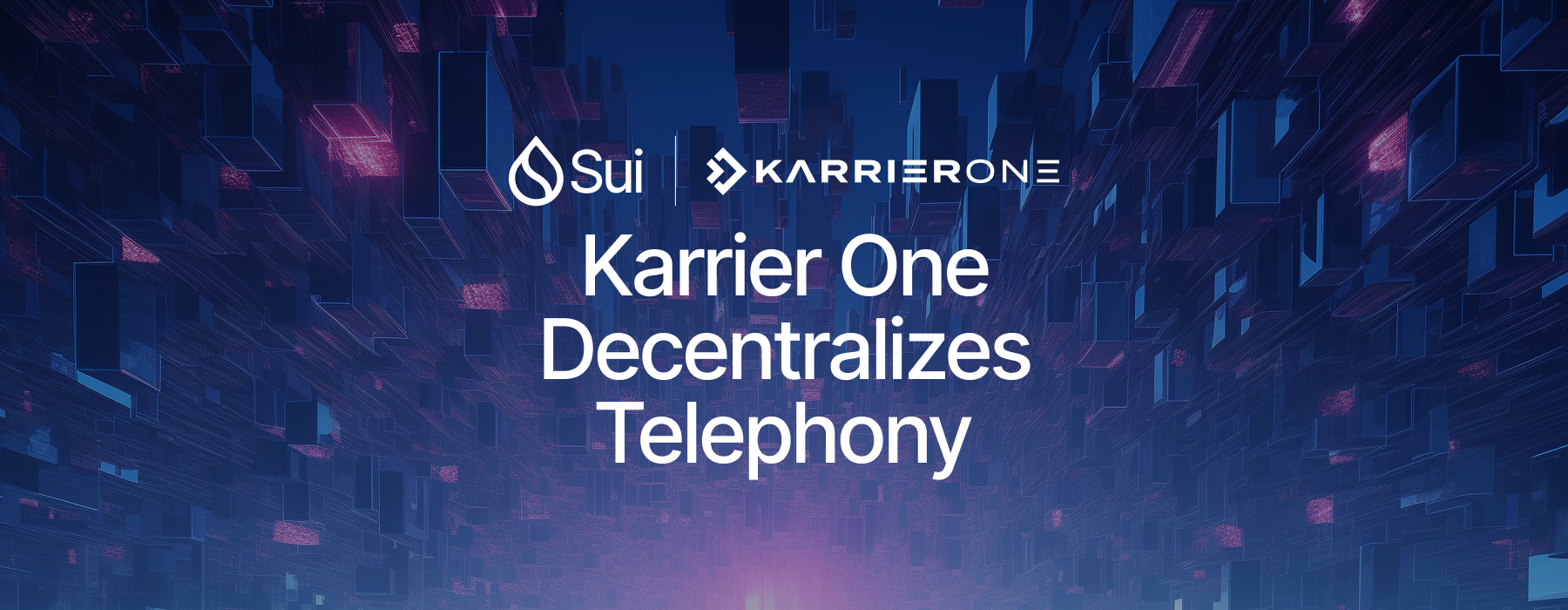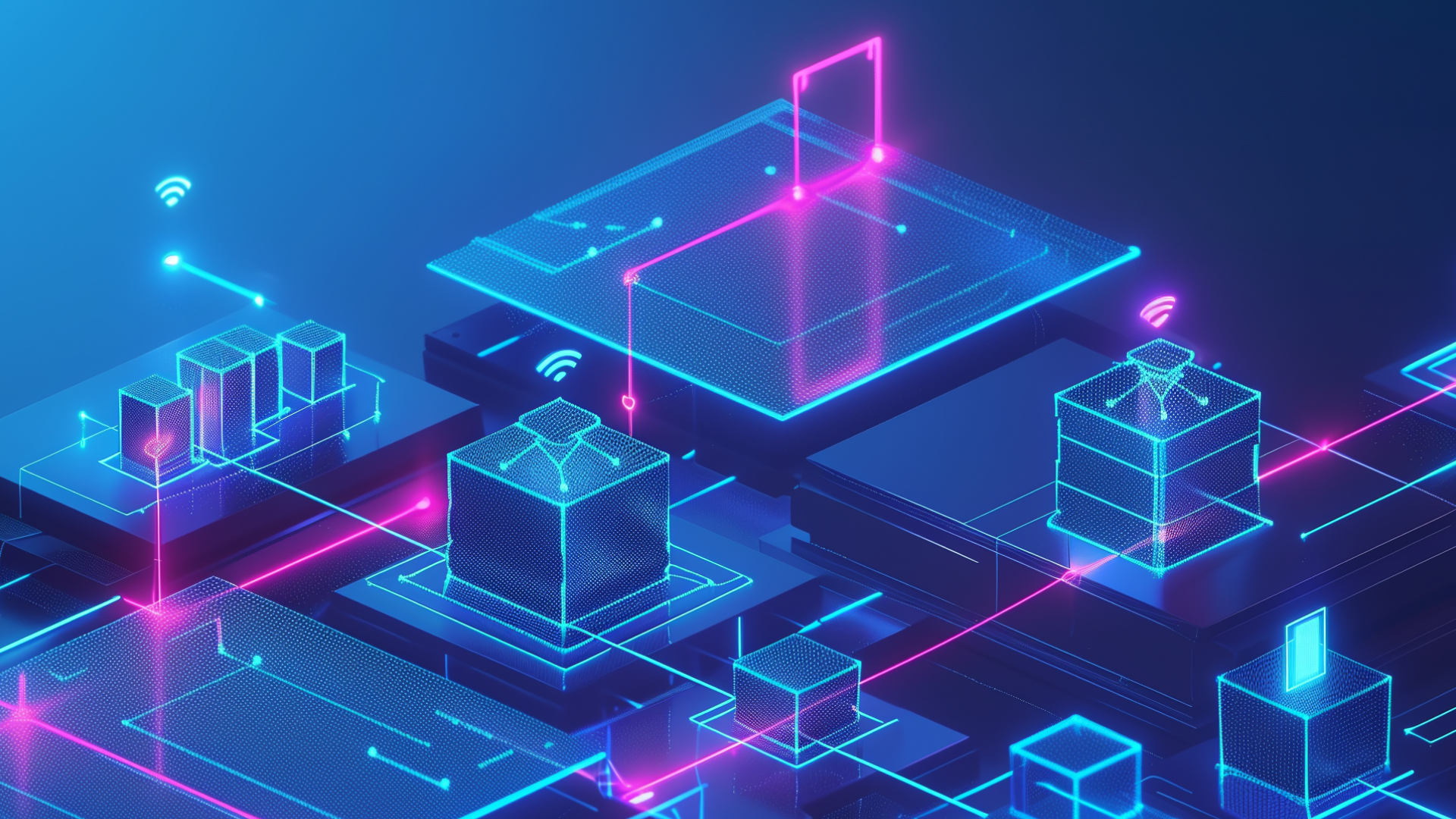Karrier One Builds Wireless Phone Service with Sui
Karrier One relies on Sui and zkLogin in its mission to bring democratized, carrier-grade wireless connectivity to underserved areas.

Karrier One plans to democratize wireless connectivity, bringing service to areas that have long been left with spotty service—or no service at all—and to enable modern payment capabilities for people without traditional bank accounts.
But bringing the notoriously slow-moving telecom industry into the Web3 world is a big undertaking. And the Karrier One team decided on Sui technology to help build out its ground-breaking network.
Karrier One has three main objectives:
- Build a mobile network platform that enables wireless connectivity in underserved communities; at the same time, improve densification, which means getting reliable coverage into highly dense, populated areas, such as underground garages, campuses, and malls
- Provide telecommunications and phone numbers to users within Web3
- Create the ability to transfer money simply using phone numbers, not bank accounts
“We can unlock connectivity for the whole world,” said co-founder and Chief Operating Officer Andrew El’Lithy. “That's what we’re looking for: seamless connectivity all throughout the world.”

To do this, they are leveraging the deep experience Karrier One co-founder and Chief Executive Officer Samer Bishay gained from working in traditional telecom, along with cutting-edge technological elements, including Sui’s blockchain and primitives like zkLogin.
“Sui is the accurate blockchain to build on,” said Karrier One co-founder and Chief Technology Officer Andrew Buchanan. “Not only does it have a similar concept to our Karrier One KNS, but Sui offers other important features. For instance, the transaction speed is really good, and when you’re dealing with sending funds, dealing with phone numbers, you want to have that reliability behind the blockchain. Sui really comes with that accuracy that we need.”
Building a new kind of network
With Karrier One Mobile, the company is building a decentralized, carrier-grade telecom network, both by installing its own infrastructure and partnering with other mobile carriers to ensure widespread 5G coverage around the globe.
“We know that there’s a missing component for telecoms today, and that’s putting in the infrastructure,” said El’Lithy. “Infrastructure costs a lot to telecoms and takes a really long time before dates are set, so we are focusing on deployments.”
Professional deployers work with individuals, property owners, and municipalities to get radios properly installed.
In order to future-proof the network, Karrier One is incorporating the Sui blockchain. “The Sui blockchain makes it easy for us to do the deployment and prove that data has gone through the network's radios,” said El’Lithy. “Without this, everything would be privatized and centralized. We want to create a platform that does orchestration to make it easier for other users to deploy their radios and access the actual radio access network (RAN).”
By partnering with a competitive local exchange carrier (CLEC) led by Bishay and leveraging zkLogin, a Sui primitive that supports Web2 authorization services, Karrier One is able to offer US and Canadian phone numbers and provide them as NFTs. This NFT model has the added benefit of allowing Karrier One to protect against SIM swap fraud, a common problem in some parts of the world in which people hijack another person’s SIM.
Unbanked payments via Web3
Another area of focus for Karrier One is mobile payments.
“There’s a huge need for a monetary system that allows unbanked people to send and receive money,” said El’Lithy.
As inspiration, the team looked to an existing model that’s widely used in Kenya, called M-PESA. There, where much of the population doesn’t have access to banks, it’s common to use a phone number to pay bills and send or receive payments.
“We want to Web3-ify that,” said Nahid Masad, Karrier One’s co-founder and Chief Strategy Officer.
With Karrier One KNS, people will be able to get a virtual phone number, then send and receive payments tied to that number. But in order for this service to reach a wide audience, the team knew it would be important to make it accessible to people who aren’t yet ready for Web3.
“It’s not that easy to do for the normal layperson who’s not really tech-inclined,” said El’Lithy, “so we have to kind of work backward to go forward. zkLogin plays a huge role in us being able to onboard Web2 users.”
Using zkLogin as the basis for Karrier One KNS means people can use their Apple ID, Google log-in, or an existing phone number in order to send funds through the platform, similar to how they use the Cash App or Zelle today. “We want Web2 users to feel comfortable using our service, and zkLogin allows us to kind of adopt them into the Web3 world,” said El’Lithy.
Starting rural, and taking it global
Initially, Karrier One will deploy its radios in the United States and Canada, with the goal of reaching underserved communities and bringing connectivity to those long stretches of highway where service frequently drops. They’ve already deployed proof of concept nodes, some of which have been placed in North American indigenous peoples' territories where locals had little to no connectivity. And a forthcoming proof of concept in Newfoundland will include the option for people to purchase Canadian mobile plans.
However, the plan is to take the network global.
“One thing we found with a lot of DeWi is that it’s been region-locked specifically to the United States due to reliance on the Citizens Broadband Radio Service (CBRS),” said Nahid Masad. “But that locks out the rest of Web3 users, and Web3 is meant to be global.”
“Karrier One KNS gives us the ability to reach out to the entire Web3 community and tap into that global community to provide a service that anyone can use,” said El’Lithy.

